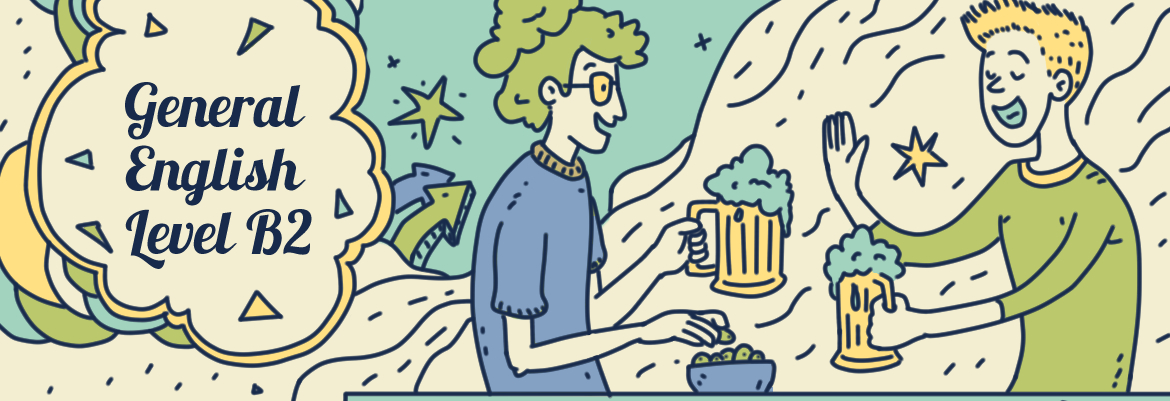Cuando hablas con alguien le demuestras que le estás escuchando y sueles reaccionar a lo que oyes de diferentes maneras. Solemos tener una reacción ante casi todos los comentarios: gestos, expresiones faciales y frases estables.
En esta unidad, verás frases comunes que pueden ayudarnos a reaccionar ante diferentes situaciones. Estas frases te ayudarán a responder correctamente y con naturalidad a los comentarios que tu interlocutor hace en inglés.
EXPRESIONES
- I see
Esta expresión no significa que la persona esté todavía viendo a la persona. El equivalente es "I understand", "Yeah". Esta frase mantiene el interés por el interlocutor. Demuestra que oyes y escuchas al interlocutor.
Por ejemplo:
- So, I was walking down the street and saw that coffee place. They actually have a pretty good coffee.
- I see.
- I got you a cappuccino, here you are.
- Oh, thanks!
- For real?
Cuando escuches algo difícil de creer, ya sea una buena o mala noticia, di "¿For real?" con mayor entonación.
Por ejemplo:
- They decided who got the promotion.
- And who did?
- Mickey is now a Senior Manager.
- For real?
- Yeah, yeah, I know. I was kind of surprised, too.
- I know
Algo entre "I see", "Yeah" y "That’s true". Cuando se utiliza como exclamación, "I know!" indica un acuerdo perfecto, empatía o comprensión. La frase también puede comunicar frustración, arrepentimiento o una idea.
Por ejemplo:
- He is so handsome!
- I know.
- I just can’t wait to meet him again in the cafeteria.
- You are not alone with this one, girl.
- Yeah, that's true
Si el interlocutor expresa algo con lo que estás de acuerdo, asiente con la cabeza diciendo "Yeah, that's true".
Por ejemplo:
- I think, there is only one way for us to be a better company. We have to rethink what kind of people we hire.
- Yeah, that's true.
- It's all about the people.
- Yeah, totally agree.
- What do you mean? / What are you trying to say?
A veces hay un malentendido en una conversación y quieres aclarar los detalles. Estas dos preguntas pueden ayudarte.
Por ejemplo:
- And it’s absolutely wrong, you know. I have never ...
- Wait, what do you mean?
- Huh? I mean, I have never done anything like that.
Con la ayuda de esta frase, también puedes reaccionar ante algo ofensivo.
Por ejemplo:
- Well, your food is ... OK.
- What are you trying to say?
- I mean ... It’s good but just ... It’s not my taste. Sorry.
- What do you mean? Are you ...
- What's your point?
Para entender qué quiere decir exactamente el interlocutor, puedes preguntar directamente: ''What’s your point?', como si se dijeras "What do you really mean?" o "What are you trying to say?"
Por ejemplo:
- I think you have to do that. It will be good for your health, you know? It will be an awesome experience.
- What’s your point?
- You have to do some sport, man!
- Lucky you!
Una expresión pertinente para una situación en la que te enteras de que a un amigo le ha tocado la lotería o ha tenido un golpe de suerte: "Lucky you!".
Por ejemplo:
- You will never guess what.
- What?
- I won cruise tickets for the whole family!
- What!? Lucky you!
- I know, it's unbelievable!
- That’s + positive adjective (great, good, awesome, amazing, fantastic, perfect)
Es la forma más fácil y eficaz de mostrar aprobación, entusiasmo y apoyo.
Por ejemplo:
- I got a call from a producer...
- That’s amazing!
- No-no, wait. That’s not the news. They offered me a role in the movie ...
- That's awesome!
- No, just ... let me finish! The main role ...
- That’s fantastic!
Lo mismo ocurre con la reacción negativa:
- That’s + negative adjective (awful, terrible, horrible, disgusting).
Por ejemplo:
- I got fired and I was really trying to do my best.
- That’s terrible!
- That’s not it. They told me they are not going to pay me for the trial period.
- Oh my God! That’s awful! I think you should report them.
- OK. I might.
DESTREZAS
La mejor manera de escuchar reacciones, entender su variedad y sus usos, es leer o ver entrevistas cortas. Consulta los siguientes enlaces, para practicar el listening:
- Emma Stone sources inspiration online
- The tonight show starring Kendall Jenner
Y para practicar el reading, puedes consultar los siguientes artículos y prestar atención a las expresiones que utilizan para reaccionar a los comentarios del interlocutor:
- Prince Harry and Meghan Markle’s first-ever interview together
Para practicar el writing, puedes concentrarte en escribir entre 5 y 10 diálogos cortos que puedas tener entre tú y tus amigos utilizando las frases que hemos visto.
En cuanto al speaking, debes practicar las respuestas a los siguientes comentarios:
- I broke my leg yesterday.
- I’m getting married next month.
- I won 2 tickets to the concert of Ed Sheeran!
- Your children are so beautiful!
- I think you should eat healthier.


Comments are closed.